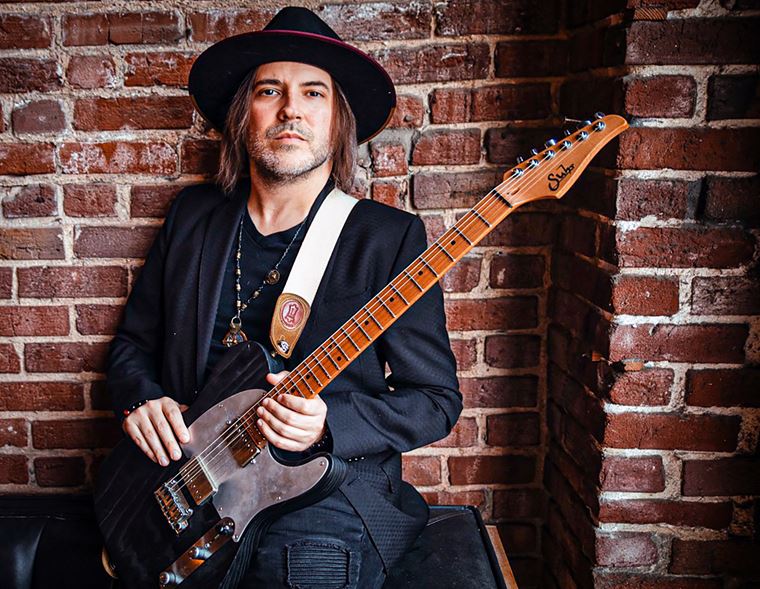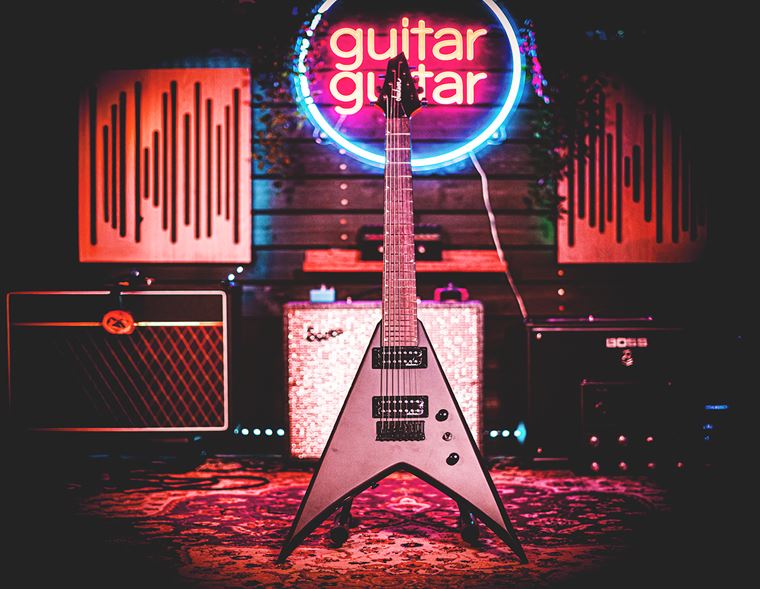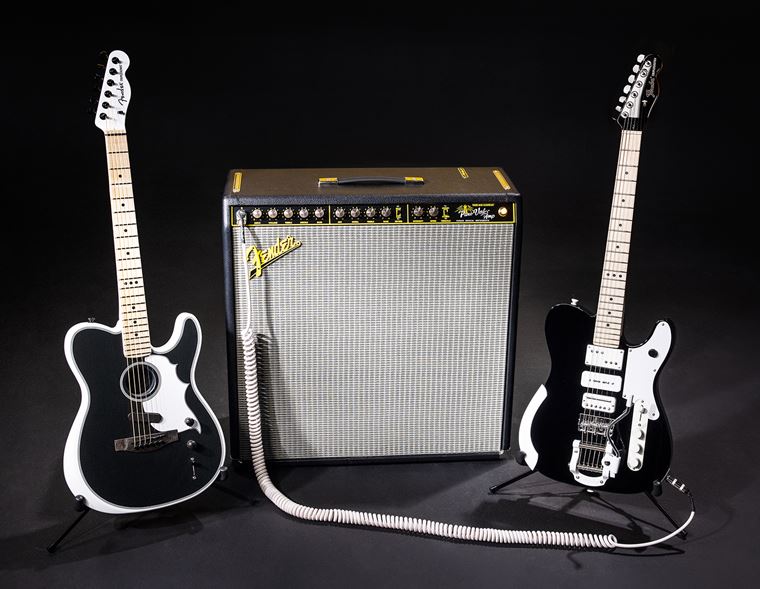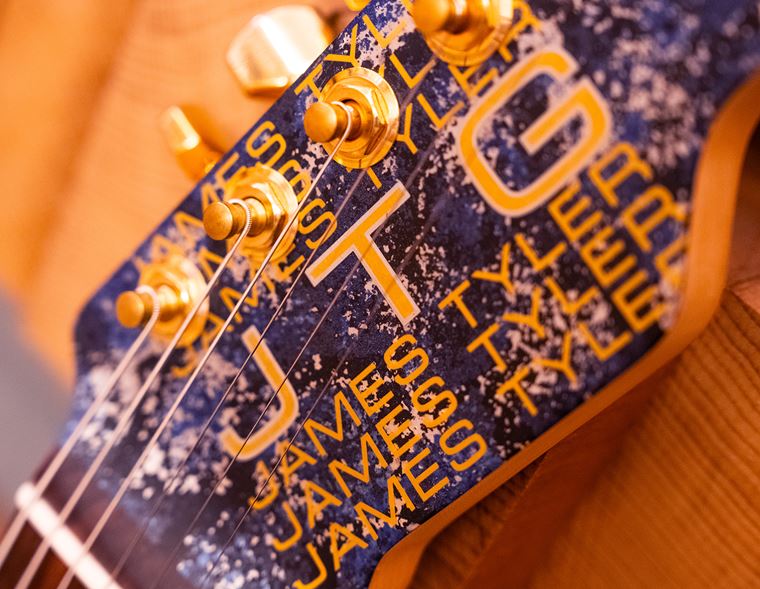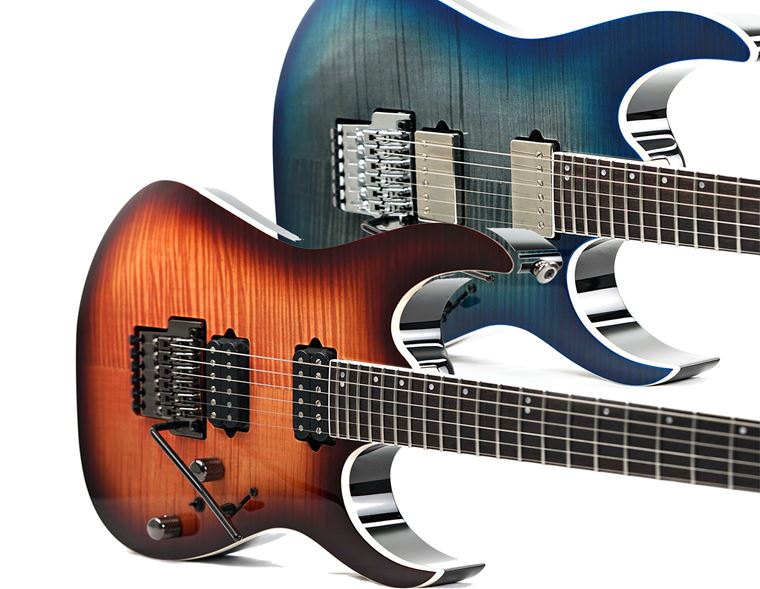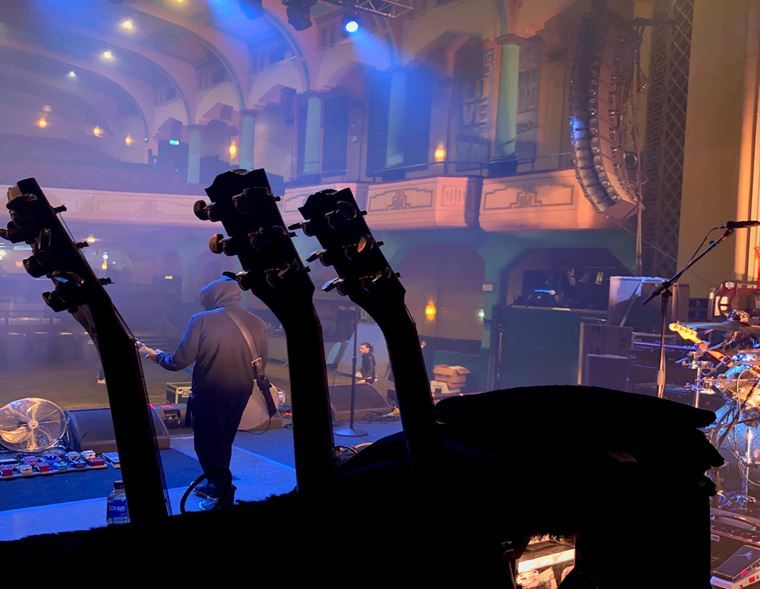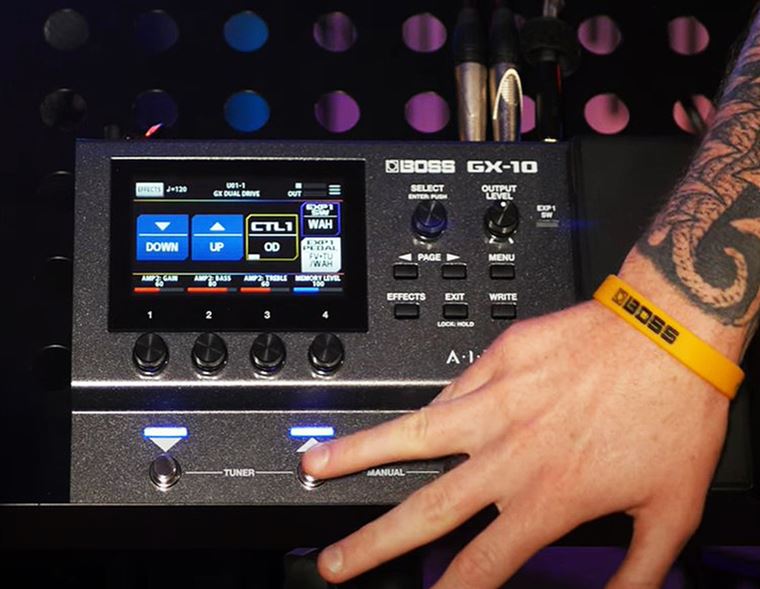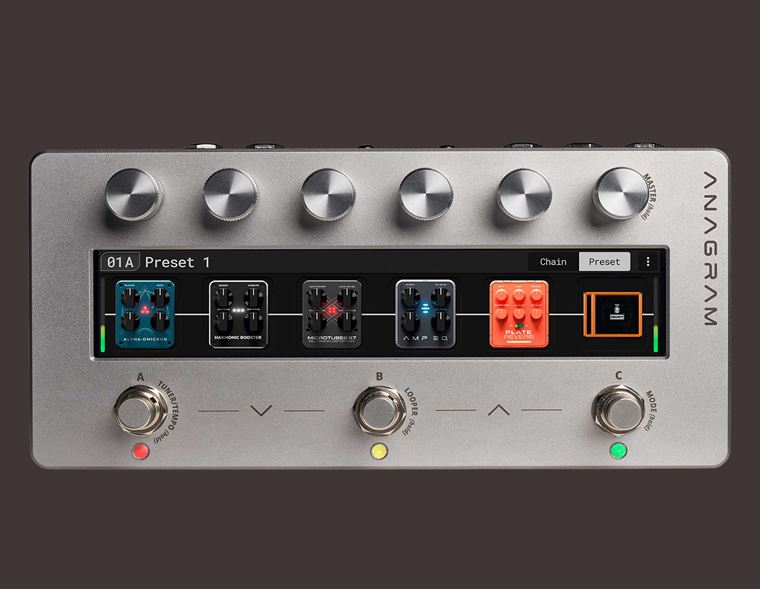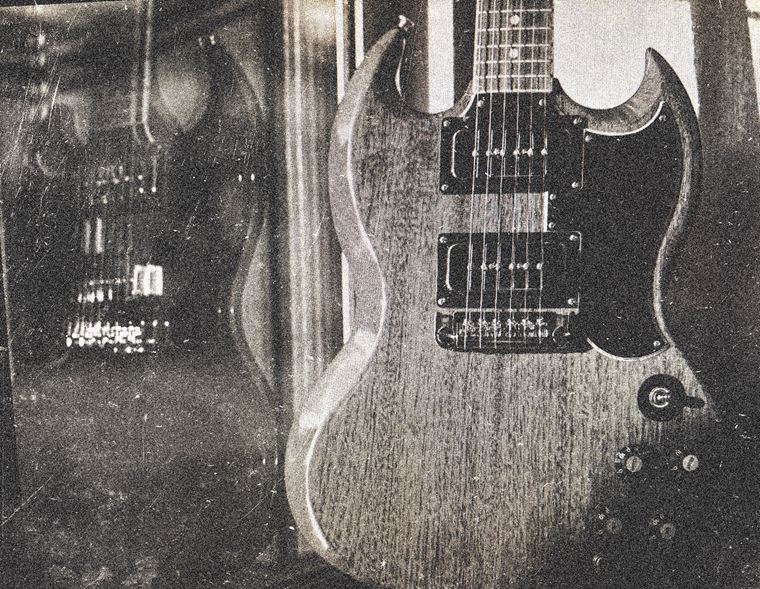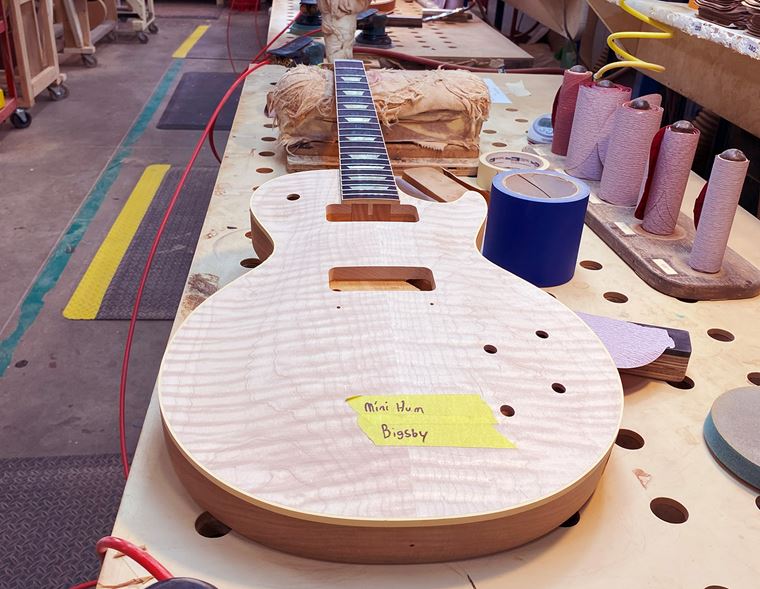The Pursuit of Heaviness: The Heaviest Guitar Tones Ever
How do you define ‘Heavy’?
Is it speed? The number of notes? The lack of notes? The number of riffs? The ‘size’ of the riffs? Maybe it’s the guitar’s relationship with the other instruments? Or the mix? How about the drums? Or the vocals?
How do you define heavy?
It could be all of those things, really. One thing ‘Heavy’ definitely needs, though, is an impossibly heavy guitar tone! Metal can’t be heavy without massive guitars. Different people have different ideas on what constitutes heavy guitar sounds, though, so we’ve had a good (heated) chat about what constitutes the Heaviest guitar sounds we’d ever heard on record.
This blog highlights the ones we could all unanimously agree on.
Let’s face it: there are literally thousands of epic high-gain guitar sounds out there. Heaviness is about more than just the guitar - of course it is – but as guitar obsessives, we want to celebrate the moments in our collective listening experience: the times where we heard something and went ‘Wow, that...is...HEAVY!’ without having to justify any historical relevance or particular context. It is simply enough to revel in the cathartic pleasures of huge sounding guitars. Raw, manicured, ratty or colossal, if it’s riffs, we want to know!
These are the heaviest tones we’ve ever heard. The songs themselves may or may not be equally heavy but we hope you’ll agree that these selections display the wealth of variety and dynamic that can be applied within the subject of Metal riffing. We’ve included videos of each because we want you to get the full effect of this Heavy Metal onslaught! It’s too much fun hearing all of these monster riffs one after the other!
In no particular order, let us delve into the realms of the Heavy...
Rammstein – Sonne
Displaying a love for Depeche Mode as much as Ministry, Berlin’s Rammstein have been at the forefront of cyber-tight Metal riffing for over twenty years now. Their first 4 albums in particular are jam packed with punishing riff moments amid some very off-kilter electronics. We could’ve picked almost any Rammstein riff, but our choice here is the piledriver that sums them up more than anything else: Sonne.
A prime example of using a riff to identify the song, Rammstein’s two guitarists Paul Landers and Richard Kruspe never overplay their hand: the riff is all the more devastating for the long gaps in between each appearance. After vocalist Till Lindemann’s opening count in (Eins, Zwei, Drei...), the guitar riff kicks in like a granite breezeblock, making the most of the Drop-C tuning. ESP guitars loaded with active EMG pickups and Mesa Boogie amps will get you close to the tone, as will getting some DI action in from Tech 21’s Sansamp products.
High gain tube amps mixed with maxed out DI modellers? That’ll be the secret to Rammstein’s epic guitar attack.
Sepultura - Roots Bloody Roots
Brazilian heavyweights Sepultura brought lots of additional percussive colour to their sound on albums like Chaos AD and the mighty Roots, from where this song originates. This is a fantastic depiction of using dynamics to start off heavy and then just pull the rug out from under your feet with a much bigger sound!
Sepultura innately understood the power inherent in taking classic Thrash but slowing it somewhat, allowing the powerful grooves to swing more and create that inimitable sense of movement and sheer heaviness. Brothers Max (guitar & vocals) and Igor (drums) Cavalera were a one-two punch whose Godzilla-sized grooves were unmatched in the mid-90s.
With raw production by Ross Robinson, and Max’s BC Rich Warlock and ESP Vipers tuned to C# (with the top E and B strings removed), Roots Bloody Roots blended brutal Metal with native Brazilian culture, resulting in an unforgettable sound.
Strapping Young Lad – Detox
Devin Townsend has never been a man to shy away from a gargantuan riff. His solo albums are chock-full of his open C and open B tuned riffing, often on a baritone 7 string. However, it was with his previous band, Strapping Young Lad, that he wholeheartedly went for the jugular.
Where bands like Rammstein make sure each song has a killer riff, Townsend sews an entire album’s worth of grade ‘A’ riffs into each song!
On a tune like Detox from the album City, the brutality is gobsmacking. One thing really worth highlighting here (apart from the unreal ability of each band member) is the dynamic change that takes place just over half way through the song. Rather than settle for the obvious cliché of simply ‘having a quiet bit’, the song changes in momentum entirely, setting up a completely new, separate groove that is equally heavy to the previous grind, and giving your ears something new to grab hold of.
This songwriting device actually makes things seem even heavier, because the fatigue you feel from all of the sonic abuse temporarily relents, in time for another swathe of aural carnage to ensue!
It’s an impressive performance, followed on the record by the song Home Nucleonics, which may actually be altogether heavier. Trying to determine which is the heavier Strapping Young Lad tune is a thankless task: take a deep breath and hang on tight, it’s a thrilling ride that’ll completely destroy you!
Devin, at this point in his career, used ESP Horizon and EX guitars with Mesa Boogie Dual Rectifier amps. Active EMG pickups and triangle-shaped .88 Tortex picks will get you on the road to Strapping-era Dev-tone too!
SUNN O))) – Between Sleipnir’s Breaths
And now for an altogether different type of heavy. SUNN O))) are a two piece (augmented in live situations) who make music from the harmonic relationships between combinations of big, fat, low-down, buzzy notes. The fathers of Drone-Metal, SUNN O)))’s riffs are glacially slow, often taking minutes to repeat. Theirs is the world of volume, oscillation and texture.
Unique is not the word!
We picked this opening salvo from their newest release, Life Metal. It’s slow and impenetrable for sure, but it is also deliberate and meticulous, bringing an artist’s sensibility to their subterranean, glowing guitar sounds. Their sound is hugely powerful, and nothing like anything else on this list.
Volume is the key to capturing SUNN O)))’s sound: tune down to B, take advantage of Rat pedals and don the optional robes. Play slowly and pay attention to the sympathetic harmonic notes coming from the instrument and amp as they interact with the loud soundwaves: this is where the music resides for SUNN O))).
Deftones - Diamond Eyes
Stephen Carpenter was one of the first relatively mainstream players to venture into the intimidating world of the 8-string guitar. Deftones have always been able to appeal to an audience larger than just Metal fans, and Carpenter’s beefy playing has never gotten on top of the rest of the band, no matter how ferocious-sounding it nearly always is! Much like Rammstein, the riffs are huge and bludgeoning but still allow space for the song to flourish and develop.
Having said that, the riffs on Diamond Eyes are a star turn. The whole song is laced with stop-start greatness, but it’s the ‘enormous monster stomping through a lake’ moments in the latter half of the song (and especially the end) that made us really stop and listen. If ever there was a point to be made about slowing things down to make them sound bigger and heavier, these riffs supply ample proof. The sparse arrangement and performance from the other band members only serves to highlight how huge and crunching this moment is. It’s spectacular.
You’ll need either an 8-string guitar or a 7-string tuned down to F# to get this type of sound happening. The timbre is everything here: it just does not sound anything like as epic on even a slightly higher tuning. Carpenter plays ESP (is there a pattern emerging here?) guitars loaded with EMG - and now Fishman Fluence - pickups and has used everything from Marshall JMP1s to Mesa Boogies to Guitar Rig software on a laptop (even live!) to achieve his Kaiju-sized tone.
Bleed – Meshuggah
Bringing the Heavy like no other band can, Sweden’s Meshuggah combine masses of talent with a taste for some truly other-worldly music. Theirs is a very distinct type of heaviness, forged over the last three decades in progressively more expansive ways.
Both Meshuggah guitarists - Fredrik Thordendal and Mårten Hagström – play Ibanez 8 string guitars and are world-renowned for their mind-bogglingly complex rhythms.
Bleed is a prime example, from the Obzen album. Bleed has a rhythm part that is easy to listen to and appreciate, but terrifyingly hard to replicate. Drummer Tomas Haake dreamt up the drum parts and then had to learn new ways of playing to be able to pull off the performance! Meshuggah are trail-blazers indeed. They have a well-acknowledged reputation of being perhaps the most cutting edge and influential Metal band of the modern era, and it’s clear that nobody can match them for sheer sci-fi ferocity.
Slaughtered – Pantera
Our final riff today is by one of the unadulterated masters of riff-writing. ‘Dimebag’ Darrell Abbott was, without a doubt, one of the greatest Metal guitarists of all time. His sound, his feel and his attitude were unlike any other player’s and his loss will forever be mourned by those who love heavy music and great guitar playing.
Loads of Panteras riffs are scandalously heavy, but the one we picked today is the crushingly muscular Slaughtered, from the album Far Beyond Driven. This song is a prime example of Darrell’s super-tight rhythm playing: the middle section with the machine gun-like D# notes is some of the heaviest music we’ve ever heard!
Like Strapping Young Lad, Pantera were never stingy with the riffs: Slaughtered alone contains at least four different riffs that other Metal bands would kill for! Dimebag’s superb guitar solo skills were not even required for this awesome, pummelling piece of music.
Famously, Dimebag wasn’t interested in tube amps: his highly distinctive (and deeply divisive) sound was achieved with tall walls of solid-state Randall Warhead amps. His Dean ML and Razorback guitars were loaded with a Bill Lawrence bridge pickup, which Dime later switched out for a signature Seymour Duncan model, the Dimebucker. For Dime’s tone, you’ll want to scoop out as much of the midrange as you possibly can and boost the treble and bass correspondingly. Then, it’s a matter of attitude.
Final Thoughts
We’ve kept this list short and sweet this time. Should we have included Metallica’s Sad But True? What about Left-Hand Path by Entombed? Or Self-Bias Resistor by Fear Factory? They were all in the long list! Did we miss some of your favourites? It’s inevitable, and we apologise for that, but it does go to show just how many fantastically brutal tones are out there!
Heaviness in Metal can be a lot of things but it’s nothing without a great guitar crunch. We hope we’ve brought you some tasty examples today, and perhaps even opened your ears to some music you may not have heard before. The important thing is that we all agree on the inherent awesomeness of beautifully heavy guitar tones!
Until next time.
Ray McClelland

